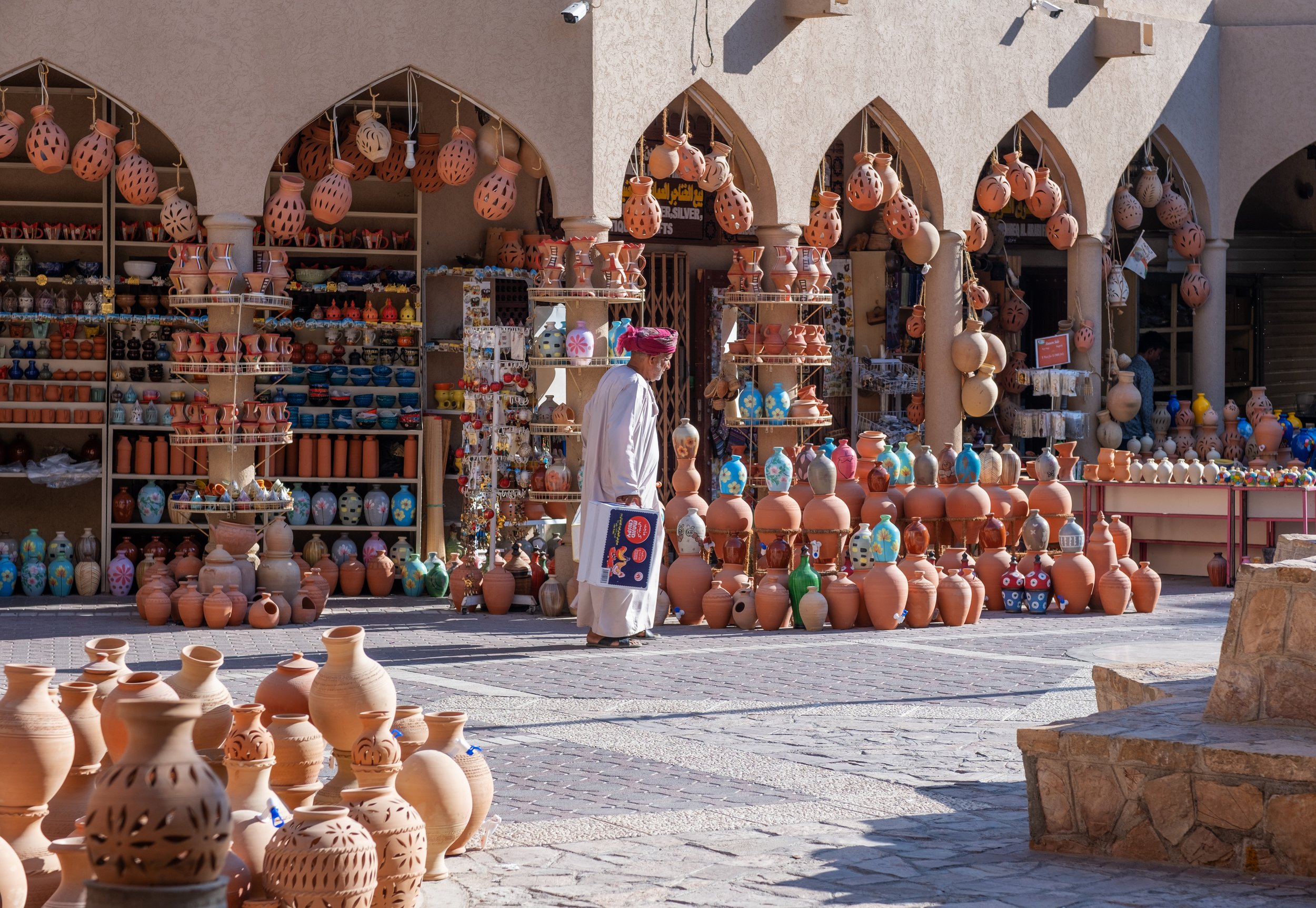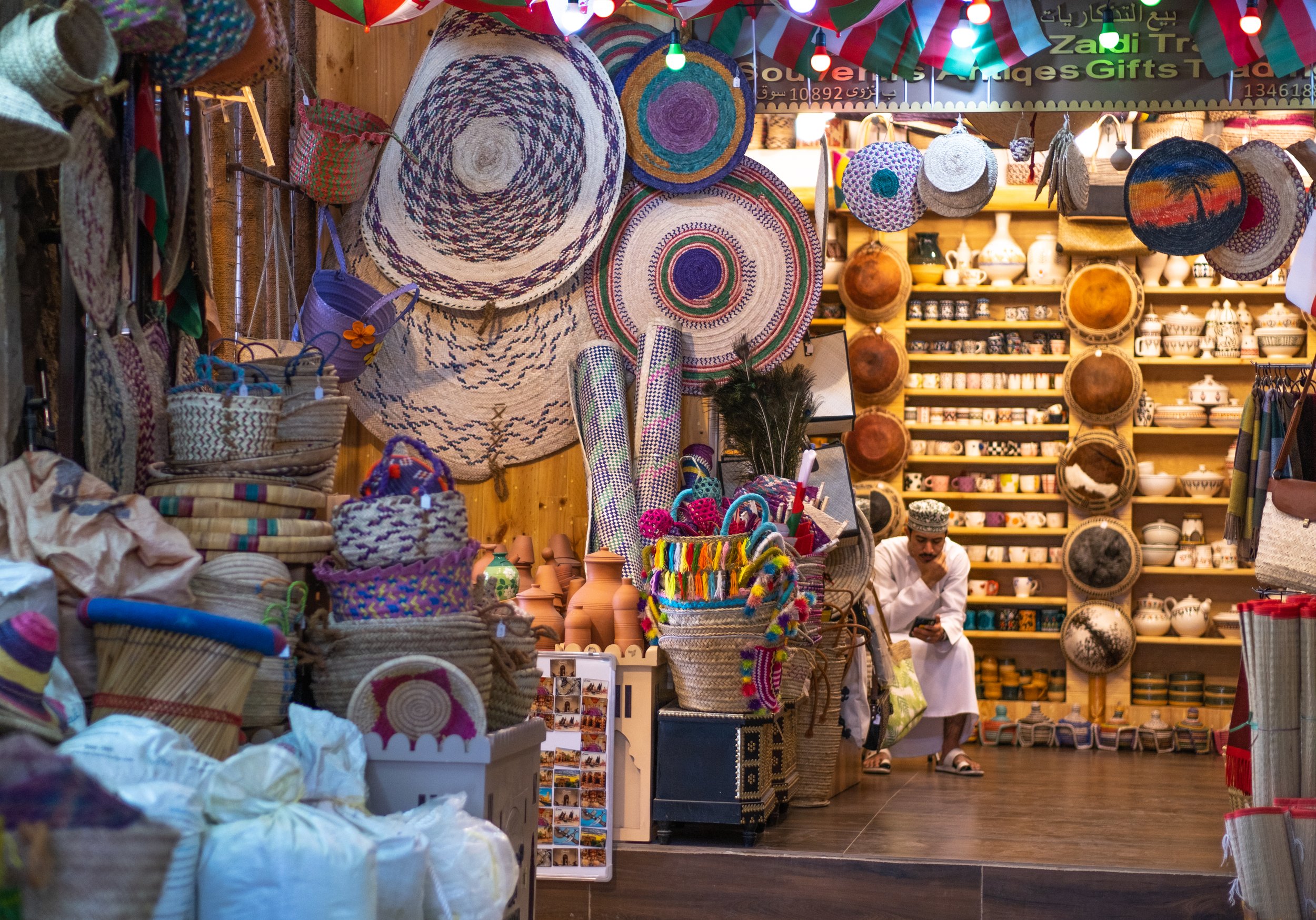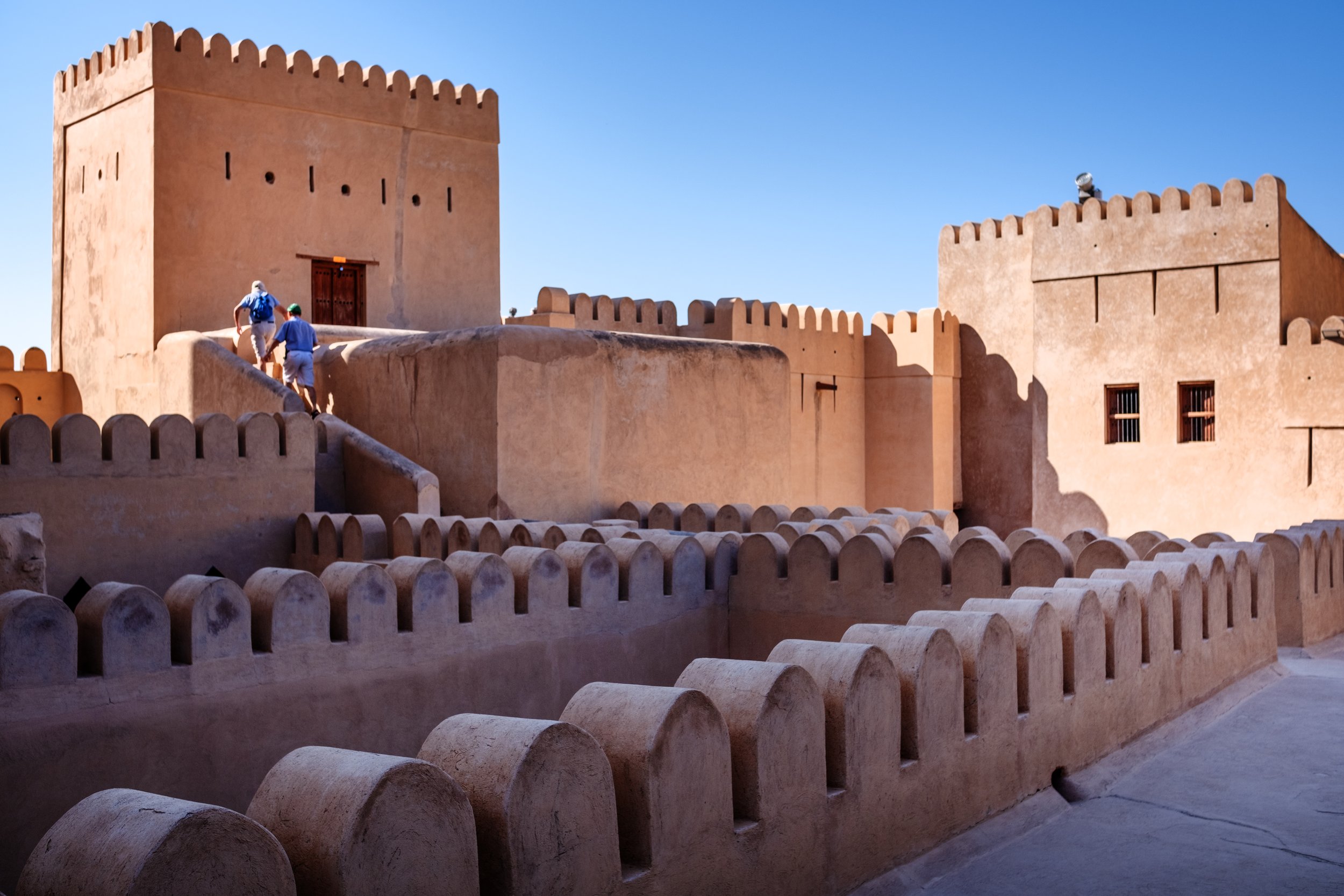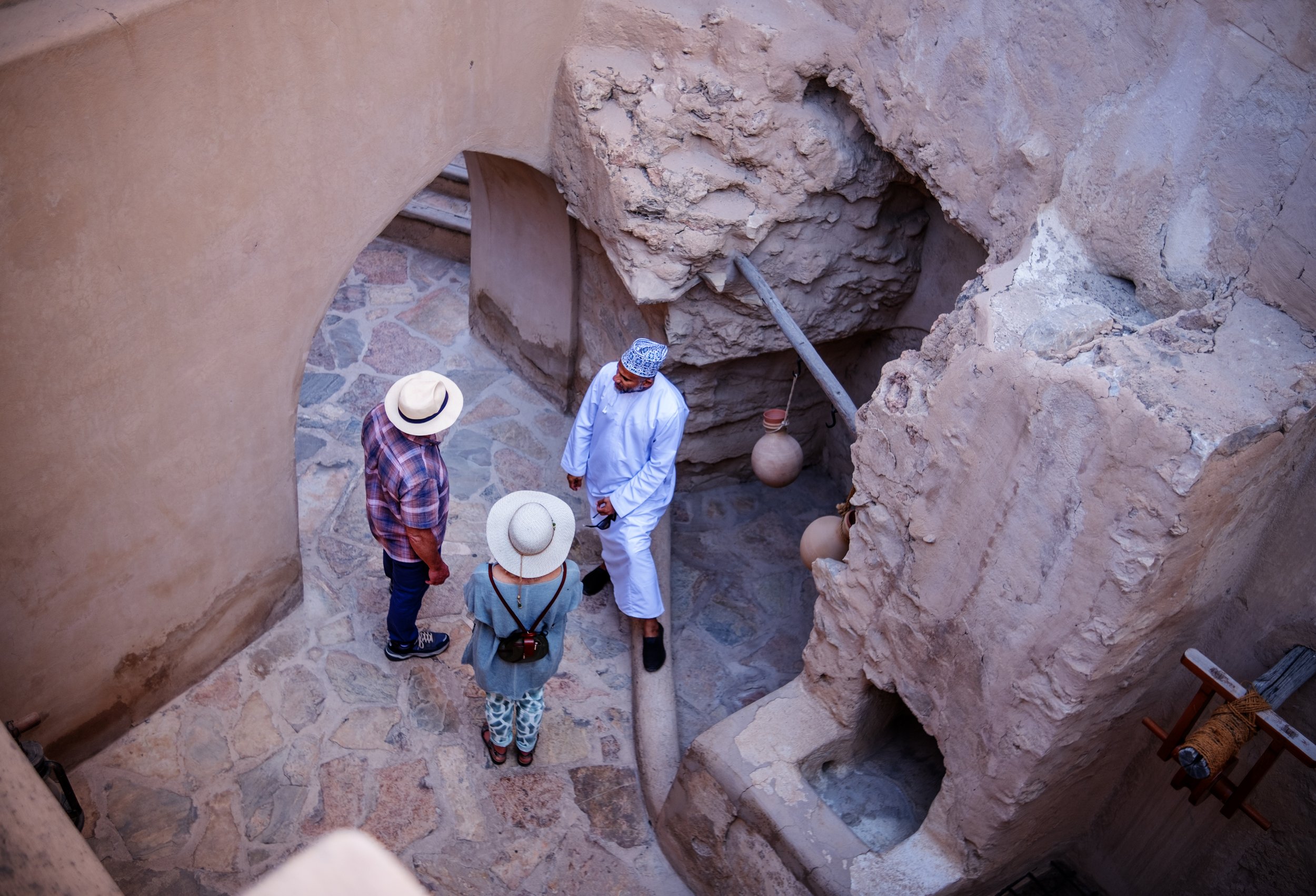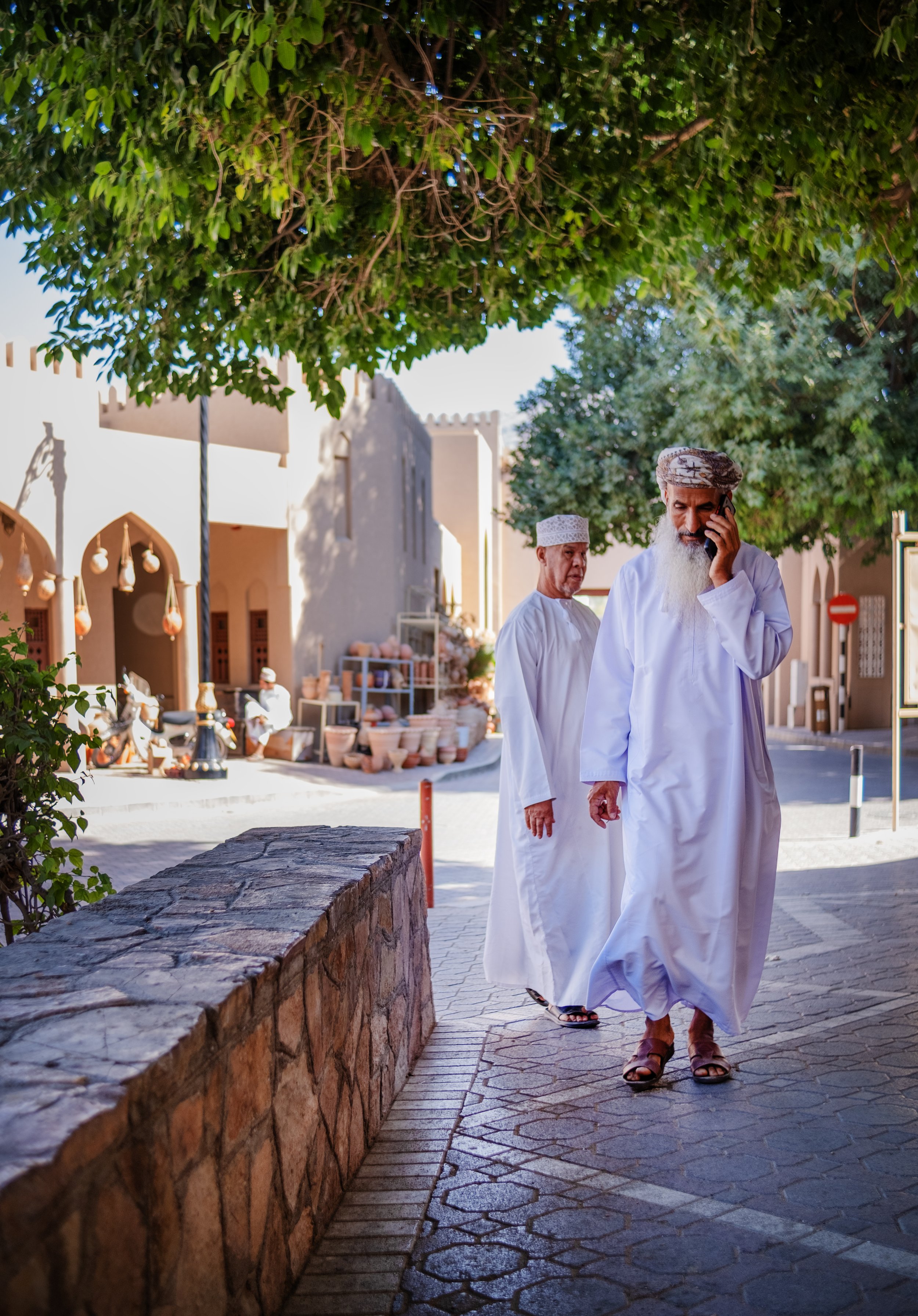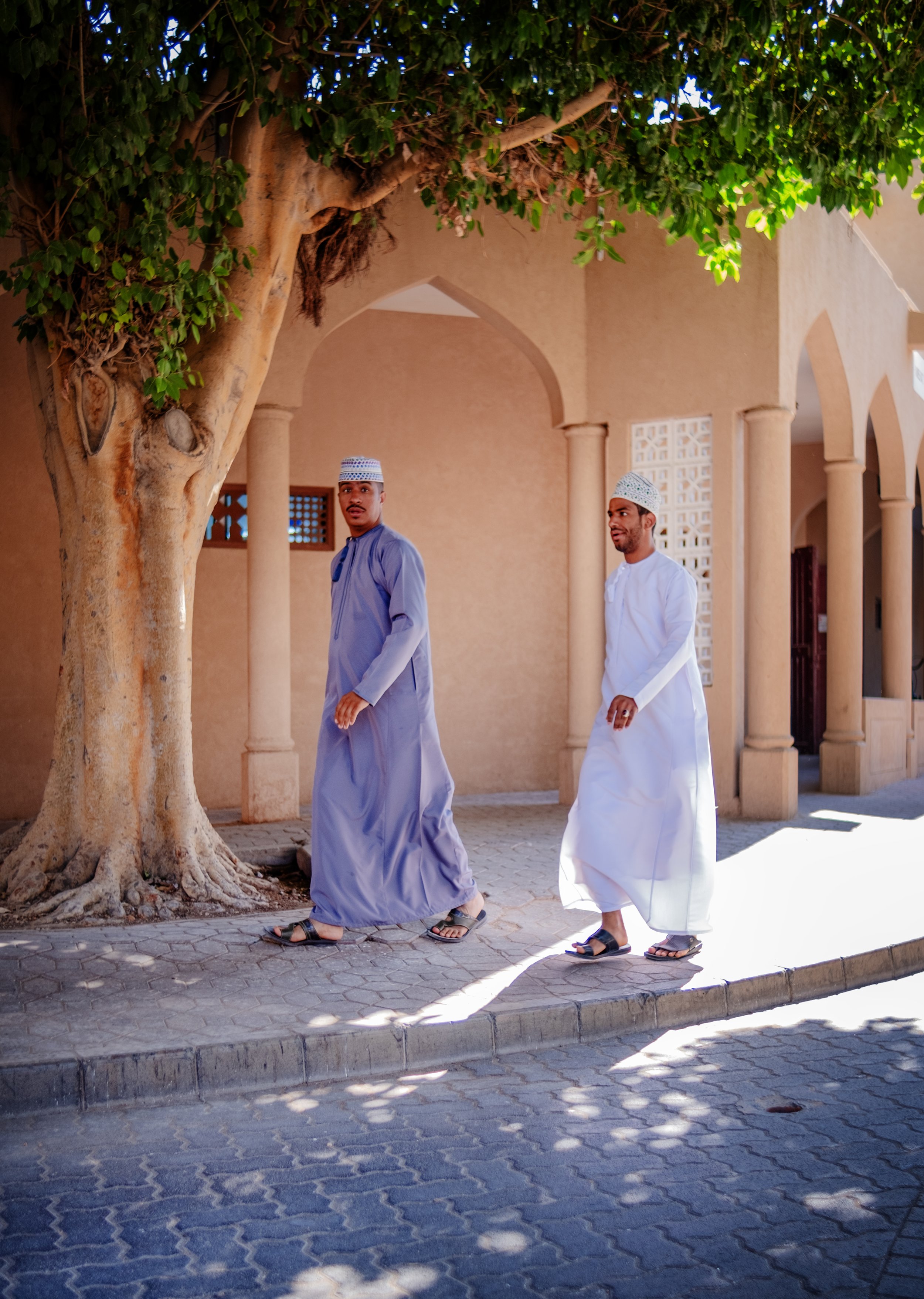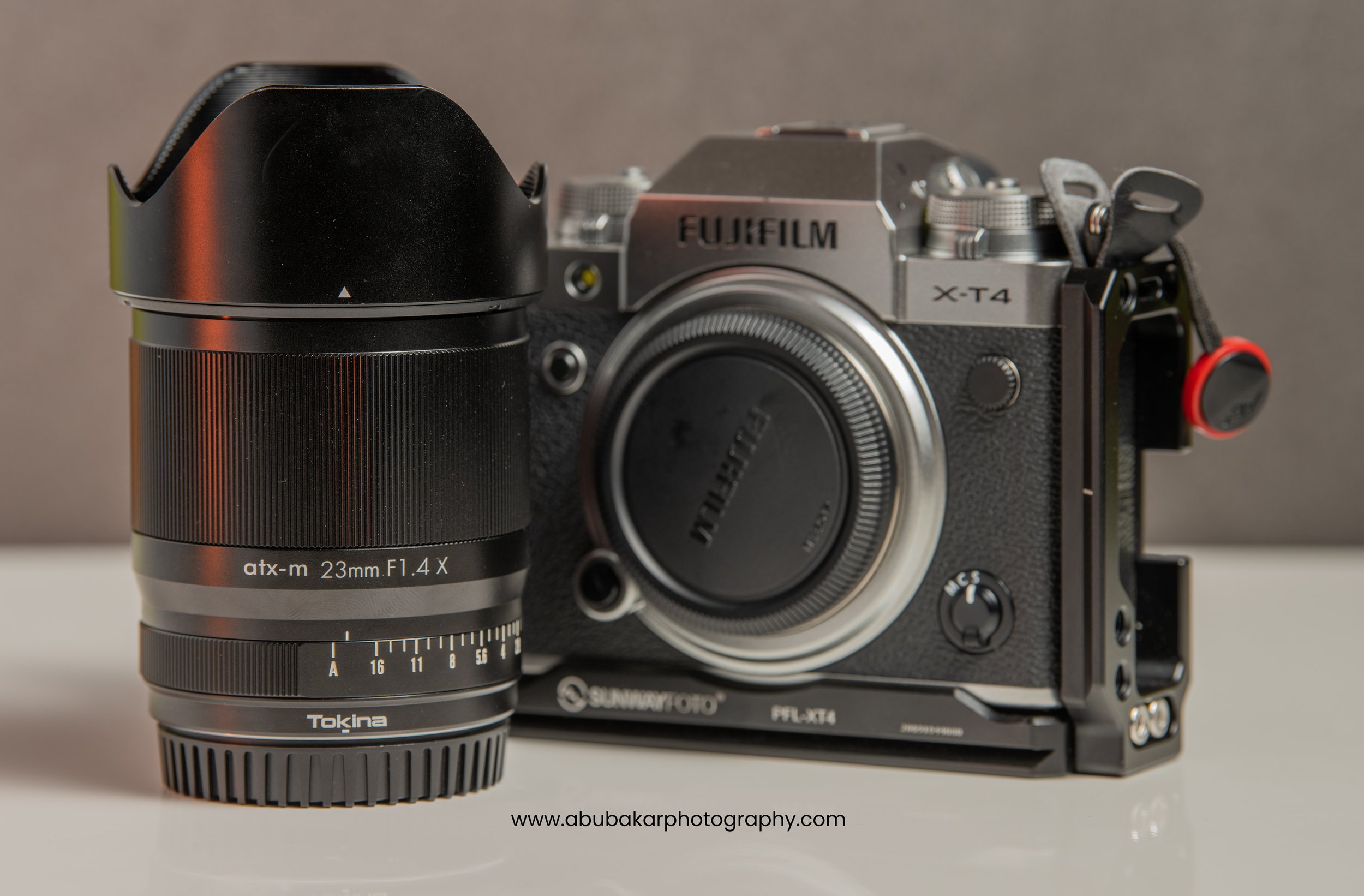Visit Nizwa - The Cultural Hub of Oman
Learn everything about Nizwa’s historical and cultural sites including Nizwa Fort & Nizwa Souq.
History of Nizwa
Nizwa is a city in Oman's Al Dakhiliyah region that is considered one of the country's most historic and significant cities. Nizwa, with its rich heritage and cultural heritage, is a city that provides travelers with a unique and authentic experience, showcasing Oman's traditional and historical side.
Nizwa has a rich history dating back to the 6th century, when it was an important center for trade and commerce. Nizwa was also an important center of Islamic learning during this period, with many of the city's residents being renowned scholars and intellectuals. Nizwa became the country's capital in the 7th century, and it played an important role in the country's politics, culture, and religion.
The significance of the city can also be seen in its architecture, with many traditional and historical structures still standing today. Nizwa's old city is a maze of narrow streets and alleyways dotted with historic buildings and homes that reflect the city's rich heritage and cultural traditions. Some of the most notable buildings in Nizwa include the Al Balid Mosque, which is one of the region's oldest and houses an extensive collection of Islamic manuscripts, and the Al Khodari Mosque, which is thought to have been built in the 7th century and is one of the world's oldest mosques.
The city of Nizwa is also famous for its traditional arts and crafts, with many local artisans practicing traditional skills and techniques passed down from generation to generation. The city is known for its silver work, with many local artisans crafting intricate and beautiful silver jewelry, pottery, and metalwork. The traditional skills of the local artisans are also displayed in the traditional weaving techniques used to make textiles, rugs, and fabrics, which are known for their intricate patterns and bright colors.
Nizwa Souq
Nizwa Souq, located in the heart of Nizwa, is one of the Sultanate of Oman's most vibrant and historic markets. It is a must-see for those interested in traditional Arabic culture, history, and shopping. The market is famous for its beautiful silver jewelry, textiles, spices, copper, and pottery items, which are still made using traditional techniques passed down through generations. This article will go over the history and significance of Nizwa Souq and the surrounding markets, as well as what visitors can do there.
Nizwa has a long history dating back to the 6th century. The city was the capital of the Islamic empire in Oman at the time, and as such, it played an important role in the region's cultural and political development. During this time, Nizwa Souq was established as a market where merchants and traders could buy and sell goods, as well as a place where locals could go to buy daily necessities. Nizwa Souq has remained an important hub for commerce and trade over the centuries, and it has thrived despite economic changes and modernisation.
The traditional architecture of Nizwa Souq is one of its most distinguishing features. The buildings are made of mud and stone and are designed to maximize natural light and ventilation while also providing protection from the harsh desert sun. The souq is surrounded by a series of high walls, which provide visitors with a safe and secure environment. This design has remained unchanged for centuries, and it is part of what makes Nizwa Souq so distinctive.
Nizwa Souq's famous silver jewelry is one of its main draws. The market is well-known for its high-quality silver items, which are created by local artisans using traditional techniques. Visitors will find a diverse selection of silver jewelry, including bracelets, necklaces, earrings, and anklets, all of which are one-of-a-kind and handcrafted. Nizwa Souq's silver jewelry is not only beautiful, but also extremely affordable, making it an excellent place to buy souvenirs and gifts.
Nizwa Souq's vibrant and bustling atmosphere is another draw. The market is constantly alive with the sounds of bargaining, haggling, and general activity. While exploring the market, visitors can sample traditional Omani food and drink, such as dates, coffee, and sweet treats. This is an excellent way to immerse yourself in the local culture and get a true sense of the region.
Nizwa Fort - The Most Visited Destination of Oman
Nizwa Fort is a historic fortress in the heart of Nizwa, Oman's former capital. This 17th-century fort is considered one of Oman's most important architectural and cultural landmarks, and it remains one of the country's most popular tourist destinations.
The history of Nizwa Fort is intertwined with the history of Oman. Sultan bin Saif Al Ya'ribi ruled Oman from 1624 to 1649, and the fort was built during his reign. It was built as a symbol of the Sultan's power and to protect Nizwa from invading forces. Nizwa Fort has served as a military stronghold, a palace, and a prison over the centuries, and it has seen many battles and political upheavals.
Despite its rich history, Nizwa Fort has remained largely intact and is now considered a national monument. The fort is a fine example of traditional Omani architecture, and its design is a testament to the Omani people's engineering and architectural abilities. The fort is constructed of mud bricks and features massive walls, towers, and battlements to protect against invaders.
Visitors to Nizwa Fort can explore the fortress's many sections, including the entrance hall, courtyards, watchtower, and battlements. The entrance hall is especially impressive, with intricate carvings and sculptures. Visitors can also ascend to the top of the watchtower for panoramic views of the city.
Nizwa Fort's courtyards are also a must-see. These open spaces, which are surrounded by arches and pillars, are ideal for exploring and relaxing. Visitors can also learn about Oman's history at the fort's museum, which features exhibits and displays on the country's rich cultural heritage.
Aside from visiting Nizwa Fort, there are numerous other activities and attractions in Nizwa worth exploring. These include the Nizwa Souq, one of the country's largest and most vibrant markets, and the Nizwa Mosque, one of Oman's most important religious landmarks.
Sultan Qaboos Mosque of Nizwa
The Sultan Qaboos Mosque, located in Oman's historic city of Nizwa, is a striking example of the area's rich cultural history and magnificent architecture. This magnificent mosque, which bears Sultan Qaboos bin Said Al Said's name, is a symbol of religious piety and a noteworthy landmark that draws tourists from all over the world.
The Sultan Qaboos Mosque is renowned for its magnificent architectural style, which skillfully combines conventional Islamic features with modern aesthetics. Beautiful white marble, painstakingly carved archways, and exquisite geometric patterns that exemplify Islamic creativity are used to decorate the outside. The mosque's majestic golden dome, gracefully crowning the building and embellished with delicate writing, contributes to its magnificence. The expansive courtyard welcomes you with calm and serenity as you arrive, setting the mood for respect and harmony.
People of Nizwa
The Generosity & Warmth
The people of Nizwa are recognized for being really kind and welcoming to guests. Locals are eager to engage in conversation and tell their experiences as you visit the vibrant souks, historic forts, and medieval villages. The inhabitants of Nizwa will welcome you with open arms, whether you're looking for directions, bartering at the markets, or just taking in the local culture. Their openness to welcoming visitors and sharing information about their heritage makes for a remarkable and interesting experience for everyone.
By its inhabitants. The beautiful dishdasha, a lengthy white robe that flows gracefully over the bodies of Nizwa males, is frequently worn by them. Usually, a kumma, a cap with lovely embroidery, goes with this outfit. Women, however, display the elegance of their culture through the bright, flowing garments known as abayas, which are frequently embellished with deft hand embroidery. Numerous women also cover their faces with the niqab, which only lets their eyes show. The distinctive clothing of the Nizwa people is a reflection of their deeply ingrained traditions and sense of cultural pride.
People in Nizwa work in a variety of occupations that represent the economic and cultural diversity of the city. Numerous locals continue to work in the agriculture and farming industries, raising products including dates, pomegranates, and vegetables. Nizwa is recognized for having talented craftspeople, particularly in the production of silver jewelry and pottery. You can see master craftsmen deftly sculpting clay or painstakingly creating exquisite silver motifs as the city's ancient craft industries continue to flourish. Additionally, Nizwa is home to professionals who contribute to the development of the city, such as educators, physicians, business owners, and government officials.
This was just a summary on the beautiful City of Nixwa. There are countless activties one can do which will take at least 2-3 days. Exploring this gem is an opportunity to appreciate the peaceful coexistence of history and modernity as well as a voyage through the beauty of Islamic art and arab civilisation.




